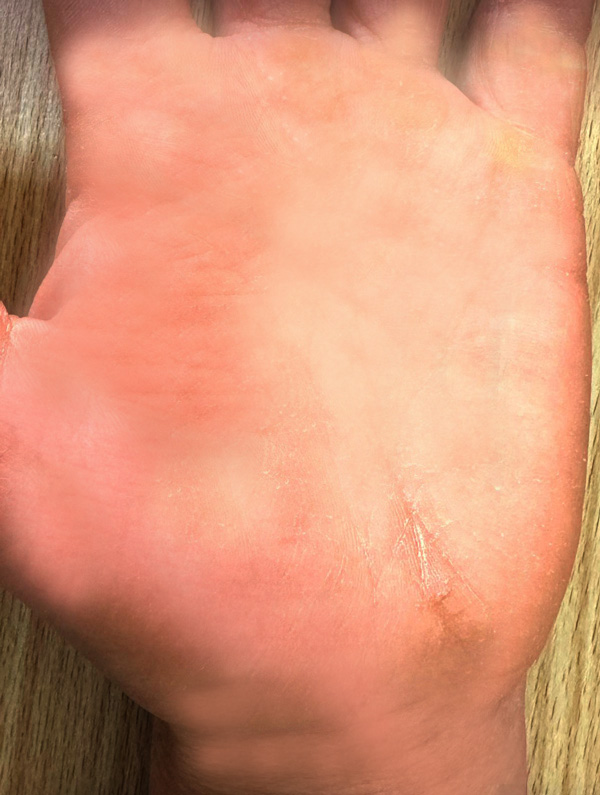CARPAL TUNNEL RELEASE
This surgery is performed for relief of carpal tunnel syndrome.
This can be performed under local anaethesia(LA) with sedation or general anaesthesia or with a brachial plexus block. (Dr LP Cheah's preference at Melbourne Surgery is do perform this operation under LA and sedation)
Procedure
The site of the surgery is marked before the operation. The anaesthetist will insert a drip for administration of drugs and fluids. Local anaesthetic is then injected.
Blood loss is minimal in this operation in the first place but a "blood pressure" cuff is inflated around the arm so that there is no blood obscuring the view of the nerve during the entire operation.
A cut is made over the carpal tunnel. The "median nerve" lies within the carpal tunnel and is compressed tightly there by the fibrous tunnel roof. This roof(the transverse carpal ligaments) is divided under direct vision to protect the nerve and its branches.
Average operating time is around 8-12 minutes
Post-Op Instructions
RECOVERY - You will have a bandage on(keep that hand elevated when you do not have to use it in order to reduce risks of swelling). Leave it on for a week - if it is tight, you can remove it and reapply the bandage. You are encouraged to do light activities with that hand.
SUTURES - Sutures need to be removed in 10-14 days unless dissolving sutures are used.
Pain-killers - The amount of pain felt varies from person to person. Some people get by with only taking Panadol. Some need something stronger
Bowel motions - It is important to drink plenty of fluids and take lots of fibre(fruits and vegetables) after the operation to avoid constipation if you are taking Panadeine
BACK TO WORK - This varies from person to person. For office work - about 1-2 weeks. For manual work - slightly longer. If you are going to use the hand a lot, it is advisable to use a compressive bandage on that had to reduce swelling in the wound.
DRIVING - It is advisable not drive for at least a week until the bandages are removed.
Alternatives
1. ENDOSCOPIC REPAIR
However the length of the wound in an open repair is already very short. There is a much greater risk of damaging the median nerve in an endoscopic repair and internally, the length of dissection is the same. In a hand surgery meeting I attended, the vast majority of hand surgeons chose to have it done by the open method when asked to vote which method would they prefer to have their carpal tunnel release done because of the risk of damaging the median nerve (a small risk but with significant consequences!)
"Endoscopic decompressions are advocated by some, but are less safe and have no advantage over the described incision. One author (RWB) has seen patients with complications of endoscopic release, including incomplete decompressions, injury, and even complete transaction of the median and ulnar nerves. The two short incisions are collectively as long as the safer longitudinal incision used for direct nerve exposure" (from Grabb and Smith's Plastic Surgery Chapter 86 - RWB is Professor Robert Beasley, Direcctor of New York University Hand Surgery Services)
2. CONSERVATIVE MEASURES (Splints, fluid tablets)- if the symptoms are mild, this can be tried initially.
3. INJECTION WITH STEROIDS under Ultrasound guidance
Risks from Carpal Tunnel Release
1. Wound problems -
(i)Wound infection (1%) : may need antibotics
(ii)Bleeding into wound/ bruising around wound( 3%)
(iii)Scar/keloid - the scar may thicken and be prominent
(iv) Pain/discomfort in scar - the pain in the wound can sometimes persist for weeks
2. Persisting symptoms(eg numbness) - sometimes the nerve has been compressed for such a long time that a full recovery is not possible(this operation would prevent further damage to the nerve). Ocasionally one can have other causes eg pain from arthritis of the wrist bones hence it is important to have a nerve conduction study before the surgery. Scarring may also occur around the nerve causing recurrence of symptoms.
3. Uncommon -
(i) nerve damage(causing more weakness and numbness)(Hence to reduce this risk it is important to have an incision of adequate length so that the surgeon has a good view of the nerve and its branches) Rarely, the nerves to that area can become hypersensitive - leading to burning/sharp pain or pain to even light touch(Reflex sympathetic dystrophy)
(ii) Swelling and stiffness in the hand

Scar from Carpal Tunnel Release

